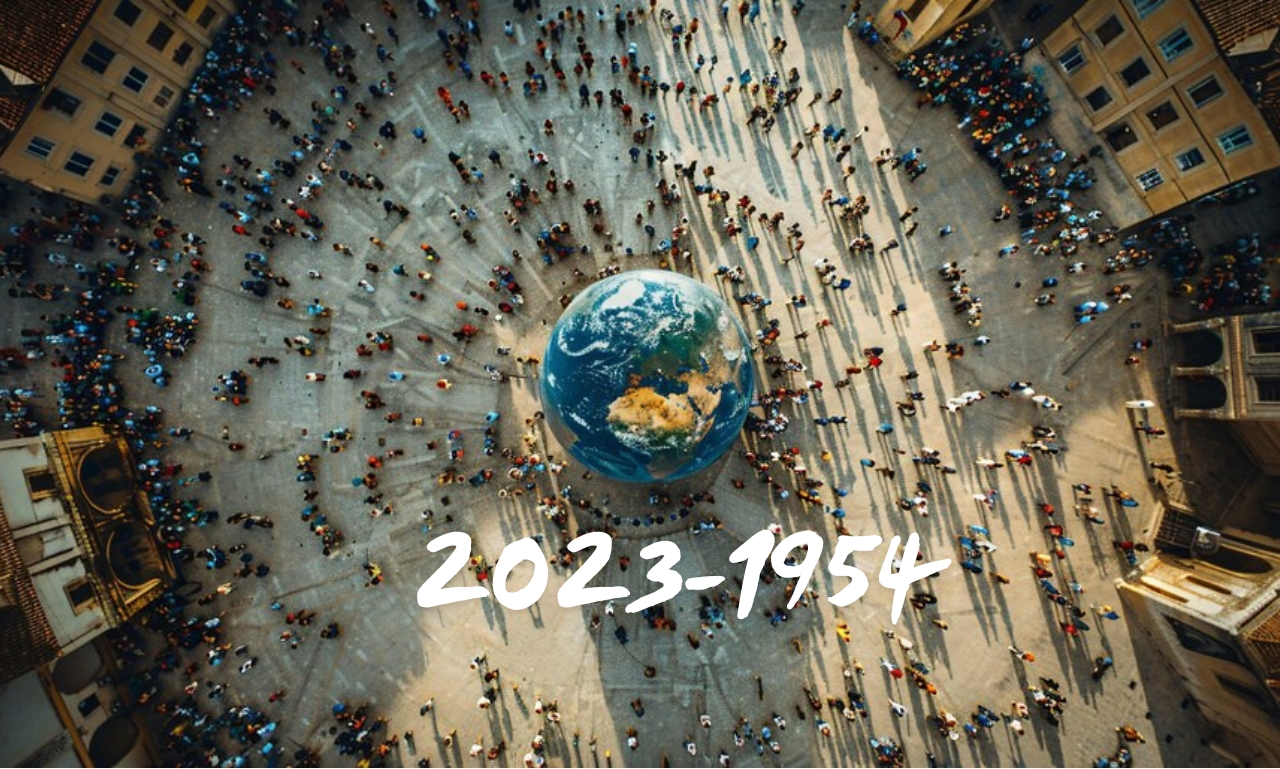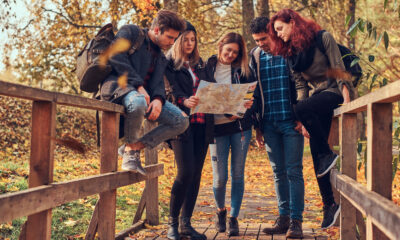lifestyle
The Rise of Eggene: Why This Trend is Taking Over

Eggene is rapidly becoming the culinary trend of the moment, captivating food enthusiasts and health-conscious consumers alike. But what exactly is Eggene? This innovative ingredient harnesses the power of eggs in unexpected ways, creating a delightful fusion that’s not just delicious but also packed with benefits. With its roots tracing back to traditional cooking methods and modern nutritional science, Eggene has emerged as a versatile staple in many kitchens.
As people become more aware of their eating habits, they seek alternatives that fit into their dietary preferences without sacrificing taste. Enter Eggene: an exciting option that promises to elevate meals while addressing our growing concerns about health and sustainability. Let’s explore this phenomenon further—what makes Eggene so special? And why is it taking over our plates and palates like never before?
The Health Benefits of Eggene
Eggene boasts a range of health benefits that are capturing attention. Packed with essential nutrients, it can be a valuable addition to any diet.
Rich in protein, Eggene supports muscle growth and repair. This makes it popular among fitness enthusiasts looking for natural sources of energy.
Moreover, it’s an excellent source of vitamins like B12 and D. These vitamins play crucial roles in maintaining healthy nerves and boosting immunity.
The presence of omega-3 fatty acids is another significant perk. They promote heart health and aid cognitive function.
Some studies suggest that incorporating Eggene into meals may enhance satiety, helping to curb those pesky cravings.
With its versatility, you can enjoy Eggene in various dishes—from smoothies to salads—making healthy eating both easy and delicious.
The Environmental Impact of Eggene Production
Eggene production is gaining attention for its lower environmental footprint compared to traditional egg farming. The process uses fewer resources, reducing water and land use significantly.
Factory farming often leads to deforestation and loss of biodiversity. Eggene, on the other hand, promotes sustainable practices that minimize habitat destruction. This makes it an appealing alternative for eco-conscious consumers.
Another advantage lies in carbon emissions. Traditional egg production contributes heavily to greenhouse gases due to methane from livestock waste. Eggene’s innovative methods help cut these emissions dramatically.
Moreover, many brands are committed to ethical sourcing when producing Eggene products. They prioritize environmentally friendly ingredients, which resonates with a growing market focused on sustainability.
As consumer awareness rises, demand for Eco-friendly options will likely push further innovations in Eggene production techniques. This could reshape how food systems function across the globe.
How Brands are Incorporating Eggene into their Products
Brands are swiftly recognizing the potential of Eggene, integrating it across various product lines. From snack bars to plant-based alternatives, its versatility is undeniable.
Food brands are experimenting with Eggene as a binding agent in baked goods. This brings moisture and enhances flavor profiles without the cholesterol found in traditional egg products.
In the beverage sector, companies have launched protein shakes featuring Egg-ene for an extra nutritional punch. Consumers appreciate this trend for aligning with health-conscious lifestyles.
Cosmetic brands also aren’t left behind. They’re adding Eggene extracts into skincare formulations due to its nourishing properties, appealing to those seeking natural ingredients.
The culinary world is buzzing too, with chefs incorporating Eggene into gourmet dishes that cater to vegan and allergy-sensitive diners alike.
As more research highlights the benefits of Egg-ene, expect innovative applications from both established names and emerging startups in diverse markets.
The Future of Eggene and its Potential for Growth
The future of Eggene looks incredibly promising. As consumers continue to seek healthier and more sustainable food options, this trend is poised for exponential growth.
Innovations in production methods are making Eggene even more appealing. Brands are investing in research to enhance its nutritional profile while ensuring that it remains environmentally friendly.
Moreover, the versatility of Egg-ene makes it an attractive ingredient across various culinary applications—from smoothies to baked goods. Food companies recognize this potential and are eager to experiment with new formulations.
With a growing awareness around health and sustainability, partnerships between brands and local farmers could further boost Eggene’s visibility. The community-driven approach may also foster brand loyalty among consumers who prioritize ethical sourcing.
As demand rises, we can expect increased marketing efforts aimed at educating people about the benefits of incorporating Eggene into their diets. This shift might well transform how we view protein sources altogether.
Challenges and Controversies Surrounding Eggene
Eggene, while celebrated for its innovative qualities, is not without its challenges. One major concern revolves around consumer acceptance. Many individuals have strong brand loyalty to traditional egg products and may resist transitioning to alternatives.
Another issue lies in the production process. Questions about how Egg-ene is manufactured can raise eyebrows regarding food safety and transparency. Consumers want assurances that what they eat meets high standards.
Additionally, regulatory hurdles could impact growth in the Eggene market. Navigating the complexities of food labeling laws presents a significant challenge for emerging brands.
Ethical debates continue over whether plant-based substitutes truly meet animal rights advocates’ expectations or if they fall short of their ideals. This ongoing discourse shapes public perception and influences purchasing decisions significantly.
Conclusion
The rise of Eggene is more than just a fleeting trend; it signifies a shift in consumer preferences toward healthier, sustainable options. As awareness grows about the health benefits associated with this innovative food source, consumers are increasingly leaning towards incorporating Eggene into their diets.
Brands are taking notice and finding creative ways to integrate Egg-ene into various products. This not only meets consumer demand but also aligns with ethical production practices that appeal to environmentally conscious shoppers.
However, as Egg-ene continues to gain popularity, challenges remain. The industry must navigate environmental concerns and address controversies surrounding its production methods. These factors will play a crucial role in shaping its future trajectory.
As we look ahead, it’s clear that Egg-ene has the potential for substantial growth within the food market. Its combination of health benefits and reduced environmental impact positions it well for broader acceptance among diverse demographics. Embracing such innovations might be vital as society strives for healthier living while caring for our planet’s resources wisely.
lifestyle
Alevemente in Action: Practical Tips for Embracing a Softer Lifestyle

In a world that often feels chaotic and demanding, the concept of Alevemente invites us to pause and reflect. This Italian-inspired philosophy encourages living with softness and gentleness, offering an antidote to the hustle culture many of us find ourselves trapped in. Imagine embracing a lifestyle where kindness reigns—towards yourself and others—and where simplicity replaces overwhelm. It’s not just about slowing down; it’s about shifting your entire approach to life.
Whether you’re seeking more peace in your daily routine or longing for deeper connections with those around you, Alevemente provides practical ways to infuse softness into every aspect of your existence. Join us as we explore how adopting this refreshing perspective can lead to profound changes in both mindsets and lifestyles. Get ready to delve into actionable tips that will gently guide you on your journey towards a softer way of living!
The Importance of Softness in Life
Softness in life often gets overlooked. Yet, it holds significant value in our fast-paced world. Embracing softness means allowing ourselves to be vulnerable and open.
When we approach life with a gentle touch, we foster deeper connections. This openness invites trust and understanding among friends and loved ones. It can transform even the toughest situations into opportunities for growth.
Incorporating softness also affects how we view ourselves. Instead of harsh self-criticism, we learn to practice kindness toward our own flaws. This shift fosters resilience and nurtures emotional well-being.
Additionally, a soft approach encourages us to slow down. We become more aware of our surroundings and experiences, savoring each moment instead of racing through them mindlessly.
By prioritizing softness, we create space for healing and joy amidst life’s chaos.
Benefits of Embracing a Softer Lifestyle
Embracing a softer lifestyle can transform your day-to-day experience in remarkable ways. It cultivates peace and serenity, allowing you to navigate life’s challenges with grace.
Softness fosters emotional resilience. By reducing stressors and pressures, you create space for joy and contentment. This shift often leads to improved mental health and clarity of thought.
Additionally, adopting this approach enhances relationships. When you prioritize kindness over competition, connections deepen. Empathy becomes second nature, enriching interactions with those around you.
Your physical environment also benefits from softness. Simplified spaces promote calmness and inspiration. A decluttered home invites tranquility into daily routines.
A softer lifestyle encourages self-compassion. You learn to treat yourself gently during struggles, fostering personal growth without harsh judgment or criticism.
Practical Tips for Incorporating Softness into Daily Routine
Start your day with gentle movements. Instead of rushing out the door, stretch or practice yoga for a few minutes. This sets a calming tone for what lies ahead.
Consider your environment. Surround yourself with soft textures and soothing colors. A cozy blanket on the couch can make all the difference during downtime.
When it’s time to eat, savor each bite slowly. Mindful eating not only enhances flavor but also fosters appreciation for nourishment.
Incorporate short breaks into your workday. Step outside or find a quiet corner to breathe deeply, allowing softness to seep into moments of stress.
At night, create a relaxing bedtime routine with calming rituals like reading or listening to soft music. These small changes can transform how you experience everyday life, inviting more warmth and gentleness into your world.
Mindfulness and Gratitude Practices
Mindfulness and gratitude are essential pillars of Alevemente. They invite us to slow down and appreciate the beauty around us.
Start with simple mindfulness exercises. Take a moment each day to focus on your breath. Notice how it feels as you inhale and exhale, grounding yourself in the present.
Combine this practice with gratitude journaling. Every morning or evening, jot down three things you’re thankful for. This can shift your mindset from scarcity to abundance.
Engage fully in daily activities too—whether it’s sipping tea or walking outside. Feel the warmth of the cup, notice the rustle of leaves, and immerse yourself in these moments.
Creating small rituals around mindfulness enhances our connection to life itself, making softness a natural part of our being. Embrace these practices regularly; they cultivate peace within ourselves and foster deeper appreciation for those we love.
Nurturing Relationships and Connections
Nurturing relationships is a cornerstone of embracing Alevemente. Cultivating connections with others fosters a sense of belonging and warmth in our lives.
Start by prioritizing quality time. Put away distractions, and engage in meaningful conversations. Simple acts, like sharing a meal or enjoying nature together, can deepen bonds.
Listen actively when someone speaks to you. Show empathy and understanding; this builds trust and shows that you genuinely care.
Express appreciation regularly. Small gestures—a note, a compliment—can brighten someone’s day significantly.
Don’t shy away from vulnerability either. Sharing your thoughts and feelings creates authenticity in relationships, allowing deeper connections to flourish.
Encourage those around you to pursue their passions as well. Supporting each other strengthens ties while fostering an environment of love and encouragement.
Simplifying and Decluttering Spaces
Clutter can weigh heavily on both the mind and spirit. Simplifying your environment creates a more serene atmosphere. Start small; focus on one area at a time.
Begin with surfaces that gather unnecessary items, like counters or desks. Remove everything and only place back what you truly need or love. This simple act can be surprisingly liberating.
Consider adopting the “one in, one out” rule for new purchases. Each item brought into your space should have purpose or joy attached to it.
Incorporate storage solutions that align with your aesthetic while providing functionality. Baskets, boxes, and shelves can help keep things organized without sacrificing style.
Regularly revisit areas to ensure they remain clutter-free. A softer lifestyle thrives in spaces that promote peace and clarity, allowing your energy to flow freely throughout your home.
Self-Care and Self-Compassion Strategies
Self-care is not just a trend; it’s a necessity. Taking time for yourself allows you to recharge and reconnect. Schedule moments in your day that are solely for you, whether it’s reading a book or enjoying a cup of tea.
Equally important is practicing self-compassion. Be gentle with yourself when things don’t go as planned. Acknowledge your feelings without judgment.
Try journaling about your thoughts and emotions. This can be therapeutic, helping you process experiences more openly.
Engage in activities that bring joy, like painting or gardening. These small pleasures contribute significantly to overall well-being.
Remember the power of affirmations. Speak kindly to yourself each day, reinforcing positive beliefs and nurturing inner peace by doing so regularly helps cultivate resilience against life’s challenges.
Overcoming Challenges in Embracing Softness
Embracing a softer lifestyle comes with its own set of challenges. Society often promotes a “tough it out” mentality, making softness feel like a weakness. This mindset can make it difficult to prioritize gentleness in our lives.
You may encounter resistance from friends or family who don’t understand your journey. It’s essential to remember that change is personal and not everyone will grasp your intentions immediately.
Another hurdle might be the pressure to perform or achieve constantly. Softness doesn’t always align with hustle culture, which can lead to guilt when you choose self-care over productivity.
Fostering an environment that supports softness takes time. Surround yourself with people who uplift and inspire you, even if they’re few and far between.
Addressing these challenges requires patience and resilience. Acknowledge setbacks as part of the process; each step toward embracing softness is significant in its own right.
Conclusion
Embracing Alevemente as a way of life can transform your daily experiences. By prioritizing softness, you create space for joy and connection in an often chaotic world. Small changes can lead to significant shifts in how you perceive yourself and others.
As you integrate mindfulness, gratitude, nurturing relationships, decluttering spaces, and self-care into your routine, you’ll find that softness doesn’t equate to weakness. Instead, it symbolizes strength through compassion and understanding. The journey toward embracing a softer lifestyle is unique for everyone; be patient with yourself along the way.
Remember that challenges will arise. When they do, lean on the principles of Alevemente as gentle reminders to navigate difficulties with grace. Celebrate each step forward while acknowledging setbacks without judgment.
A softer lifestyle invites peace into the hustle and bustle of everyday life. It allows room for growth—both personally and within your community. Adopting Alevemente not only enhances your own experience but also inspires those around you to seek their own pathways toward gentleness and kindness. Embrace this journey wholeheartedly; it’s one worth taking.
lifestyle
“2023-1954: Decades of Change and Innovation”

Embark on a riveting journey through decades of change and innovation, as we delve into the transformative years from 2023-1954. Fasten your seatbelts as we travel through time, exploring the dynamic shifts in technology, culture, politics, and society that have shaped our world today. Get ready to witness how each era 2023-1954 has left its mark on history and paved the way for the future we are living in now. Let’s step back in time and witness the evolution of our world unfold before our eyes!
The 1950s: Post-War Boom and Technological Advancements
The 1950s marked a period of significant change and progress following the end of World War II. With the war behind them, people were eager to embrace a new era of prosperity and innovation. Technological advancements during this time revolutionized daily life for many, with inventions like television becoming increasingly popular in households across the country.
The post-war boom brought about economic growth and increased consumerism. People were optimistic about the future and eager to enjoy the newfound stability after years of hardship. This era saw the rise of iconic figures like Marilyn Monroe and Elvis Presley, shaping pop culture for decades to come.
It was a time of transformation on multiple fronts – socially, economically, and technologically. The 1950s set the stage for further developments in the coming years as society continued to evolve at a rapid pace.
The 1960s: Social and Cultural Revolution
The 1960s marked a significant shift in social and cultural norms, igniting a revolution that reverberated across the globe. It was a decade characterized by youth counterculture movements challenging traditional values and advocating for civil rights, gender equality, and peace. Iconic figures like Martin Luther King Jr., Malcolm X, and Gloria Steinem emerged as powerful voices for change. The music scene exploded with the Beatles leading the British Invasion while Bob Dylan’s protest songs became anthems for a generation seeking justice and freedom. The Civil Rights Movement gained momentum with pivotal events like the March on Washington and the Voting Rights Act of 1965. Pop art, psychedelic fashion, and experimental films reflected society’s newfound sense of rebellion against conformity. Despite political turmoil and assassinations casting shadows over the era, the spirit of activism and unity prevailed as people fought for equality and justice in an ever-evolving world.
The 1970s: Environmental Awareness and Political Upheaval
The 1970s marked a pivotal time for environmental awareness as issues like pollution and conservation gained widespread attention. People began to realize the impact of human activities on the planet, leading to the first Earth Day in 1970. The political landscape was also turbulent, with movements for civil rights and women’s liberation reshaping society.
Amidst this backdrop 2023-1954, key environmental legislation such as the Clean Air Act and the formation of organizations like Greenpeace were born. Simultaneously, countries grappled with oil crises that exposed vulnerabilities in global energy systems.
The era saw both progress and challenges unfold, setting the stage for future generations to continue advocating for sustainability and social change. The seeds sown in the 1970s would bear fruit in years to come, shaping our world today.
The 1980s: Rise of Technology and Consumerism
The 1980s marked a significant period of technological advancement and consumerism. With the rise of personal computers, gadgets like Walkmans, and the introduction of video games, society witnessed a shift towards embracing technology in everyday life.
Moreover, the era saw the birth of iconic brands that capitalized on consumer culture through innovative marketing strategies. Advertisements became more prominent as companies tapped into people’s desire for luxury items and status symbols.
Alongside this surge in consumerism was the emphasis on individualism and material wealth. The mantra “greed is good” encapsulated the zeitgeist as people pursued success and prosperity with fervor.
The 1980s set the stage for a new era defined by technology-driven lifestyles and an insatiable appetite for consumption.
The 1990s: Internet Age and Globalization
The 1990s marked a significant turning point with the rise of the Internet. Suddenly, the world became more interconnected than ever before. People could now communicate instantly across continents through emails and chat rooms, revolutionizing how information was shared.
Globalization took on a new meaning as businesses expanded their reach beyond borders. E-commerce emerged, allowing consumers to shop online from anywhere in the world. This era saw a rapid exchange of goods, services, and ideas on a scale never seen before.
With the introduction of search engines like Google and Yahoo, accessing information became easier than flipping through encyclopedias. The dot-com bubble brought both excitement and uncertainty as companies raced to establish their presence online.
The 1990s set the stage for a digital age that would continue to shape our lives in ways we couldn’t have imagined back then.
The 2000s: Terrorism, Economic Recession
The 2000s marked a tumultuous period characterized by heightened concerns over terrorism and the global economic recession. The tragic events of September 11, 2001, forever altered the geopolitical landscape, leading to increased security measures and military interventions around the world.
Economically, the burst of the dot-com bubble in the early 2000s was followed by the financial crisis of 2008, sending shockwaves through markets worldwide. The housing market collapse and banking failures had far-reaching consequences on individuals and nations alike.
Governments scrambled to implement policies to stabilize economies while addressing growing security threats. The war on terror became a defining feature of international relations, shaping diplomatic strategies and military engagements for years to come.
Amidst uncertainty and volatility, societies grappled with profound questions about safety, freedom, and prosperity. The resilience shown during these challenging times reflected humanity’s capacity to adapt and persevere in the face of adversity.
Conclusion
As we reflect on the journey from 2023-1954 it is evident that each decade has brought its own set of challenges and opportunities. From post-war optimism in the 1950s to the rise of technology in the 1980s, and the internet age in the 1990s, we have witnessed remarkable transformations.
The social and cultural revolution of the 1960s, environmental awareness in the 1970s, and globalization in the 1990s have shaped our world today. The economic recessions and political upheavals of different decades have tested our resilience as a society.
Despite all these changes, one thing remains constant – our ability to adapt and innovate. As we step into an ever-evolving future, let us remember the lessons of the past and embrace change with open arms. Here’s to new beginnings and endless possibilities!
lifestyle
Maññorca: A Comprehensive Exploration of History, Culture, and Modern Appeal

Maññorca, often referred to as the jewel of the Mediterranean, is an island that boasts a rich history, vibrant culture, and stunning natural beauty. This article aims to provide an in-depth exploration of Maññorca, covering its historical roots, cultural significance, and contemporary allure.
Historical Background
Ancient Beginnings
Maññorca’s history dates back to prehistoric times, with evidence of early human settlements found in various archaeological sites across the island. The Talayotic culture, characterized by its distinctive stone structures, is one of the most significant remnants of this ancient past.
Roman and Moorish Influence
The island’s strategic location made it a coveted prize for many ancient civilizations. The Romans conquered Maññorca in the 2nd century BC, leaving behind a legacy of architecture and infrastructure. Later, the Moors ruled the island from the 10th to the 13th centuries, introducing advanced agricultural techniques and influencing the local culture and language.
The Christian Reconquest
In 1231, King James I of Aragon successfully reconquered Maññorca from the Moors, incorporating it into the Kingdom of Mallorca. This period marked significant cultural and economic development, with the construction of impressive Gothic structures and the establishment of trade routes.
Cultural Significance
Language and Traditions
The primary language spoken in Maññorca is Catalan, with a distinct local dialect known as Menorquín. The island’s culture is a blend of influences from its varied history, reflected in its festivals, cuisine, and daily life.
Festivals and Celebrations
Maññorca is renowned for its vibrant festivals, which are deeply rooted in tradition. The Festa de Sant Joan, celebrated in June, is one of the most famous, featuring parades, fireworks, and traditional horse-riding events. These festivals not only showcase the island’s rich heritage but also foster a sense of community among residents and visitors.
Culinary Delights
The cuisine of Maññorca is a delightful fusion of Mediterranean flavors, with an emphasis on fresh, locally-sourced ingredients. Dishes like caldereta de llagosta (lobster stew) and ensaimada (a sweet pastry) are island specialties that offer a taste of its culinary heritage.
Natural Beauty and Attractions
Pristine Beaches and Coastal Areas
Maññorca’s coastline is dotted with pristine beaches and hidden coves, making it a paradise for sun-seekers and water sports enthusiasts. Cala Macarella, Cala Mitjana, and Son Bou are just a few of the stunning beaches that attract tourists from around the world.
Natural Parks and Reserves
The island is home to several natural parks and reserves, such as the Parc Natural de s’Albufera des Grau. These protected areas offer a haven for wildlife and provide opportunities for hiking, bird-watching, and exploring diverse ecosystems.
Historical Sites and Landmarks
Maññorca’s rich history is reflected in its numerous historical sites and landmarks. The Naveta d’Es Tudons, a prehistoric burial site, and the Cathedral of Santa Maria of Maó, a Gothic masterpiece, are must-visit attractions that offer a glimpse into the island’s past.
Contemporary Appeal
Tourism and Hospitality
Tourism plays a crucial role in Maññorca’s economy, with the island offering a wide range of accommodations, from luxury resorts to charming boutique hotels. The hospitality industry is dedicated to providing exceptional experiences, ensuring that visitors leave with lasting memories.
Modern Infrastructure and Connectivity
Despite its historical charm, Maññorca is well-equipped with modern infrastructure. The island’s airport, located near the capital city of Maó, connects it to major European cities. Additionally, a well-maintained road network and public transportation system make it easy to explore the island.
Sustainability and Eco-Tourism
Maññorca is committed to sustainable tourism practices, with efforts to preserve its natural beauty and cultural heritage. Eco-tourism initiatives, such as promoting local products and minimizing environmental impact, are increasingly popular among both residents and visitors.
Challenges and Opportunities
Balancing Development and Preservation
One of the primary challenges facing Maññorca is balancing development with the preservation of its unique character and environment. While tourism drives economic growth, it also poses risks to the island’s natural and cultural resources. Sustainable planning and responsible tourism practices are essential to address these concerns.
Promoting Cultural Heritage
Another opportunity lies in promoting Maññorca’s cultural heritage to a broader audience. By highlighting the island’s rich history, traditions, and local crafts, there is potential to attract culturally-minded tourists and support local artisans and businesses.
Adapting to Climate Change
Climate change presents a significant challenge for Maññorca, particularly in terms of rising sea levels and changing weather patterns. Adapting to these changes through resilient infrastructure and environmental conservation efforts is crucial for the island’s long-term sustainability.
Conclusion
Maññorca, with its enchanting blend of history, culture, and natural beauty, continues to captivate visitors from around the globe. As the island navigates the challenges of modernity, its commitment to preserving its unique heritage and environment remains steadfast. By embracing sustainable practices and promoting its cultural richness, Maññorca can ensure a vibrant and prosperous future for generations to come.
-

 entertainment5 months ago
entertainment5 months agoBehind the Headlines: Understanding the Bluefire Wilderness Lawsuit
-

 entertainment5 months ago
entertainment5 months agoFrom Betrayal to Redemption: The Drama Unfolds in ‘The Grand Duke is Mine Spoilers
-

 entertainment5 months ago
entertainment5 months agoThe Dangers of Excessive Consumption: The Story of a Materialistic Princess Spoiler
-

 health5 months ago
health5 months agoElevate Your Life with xvif: Unlocking its Full Potential
-

 entertainment5 months ago
entertainment5 months agoHow LCFGameEvent are Revolutionizing the Gaming Industry
-

 entertainment5 months ago
entertainment5 months agoWhy You Should Attend a Coomer Party at Least Once in Your Life
-

 technology5 months ago
technology5 months agoInnovative Applications of Tinrent: Discovering its Surprising Uses
-

 entertainment6 months ago
entertainment6 months agoThe Evolution of a Six-Time Grammy Winner: Half of a 1990s-2000s rock duo with six grammys
